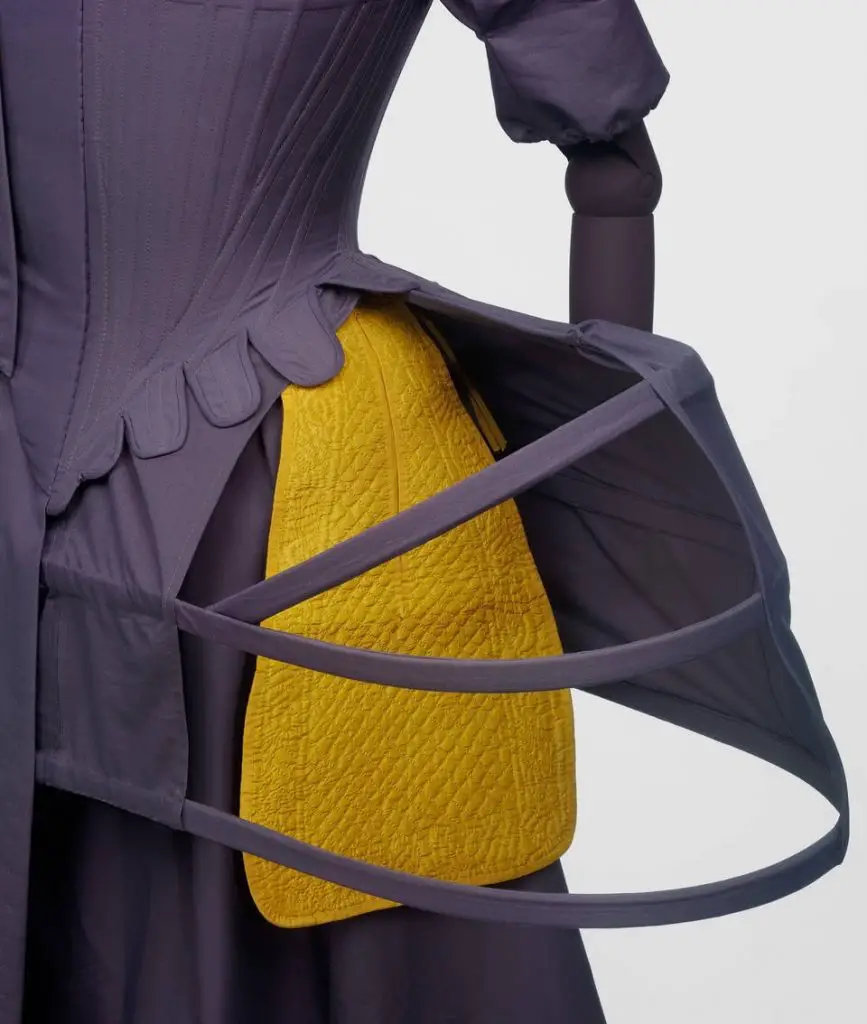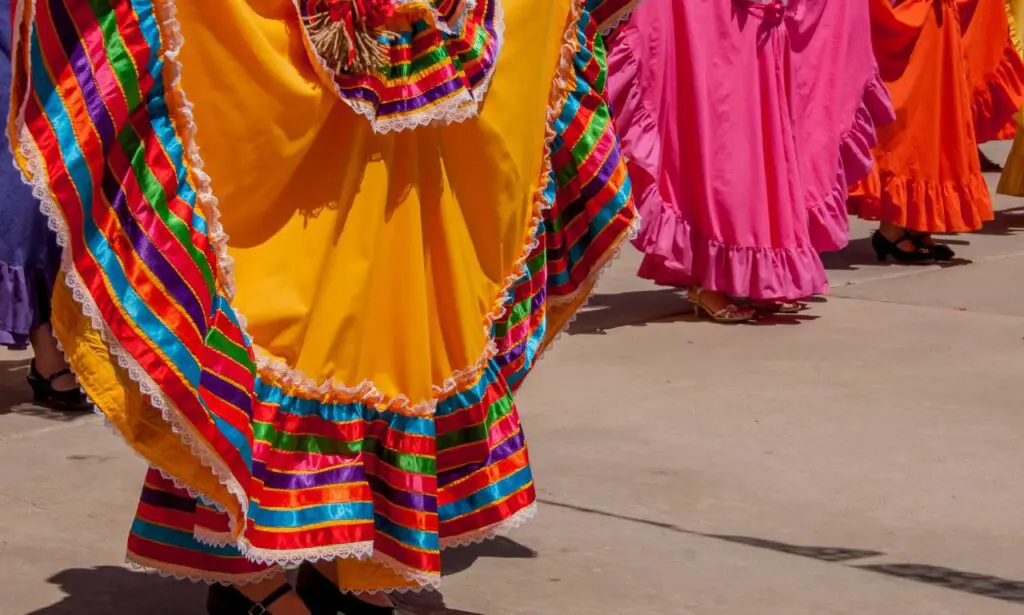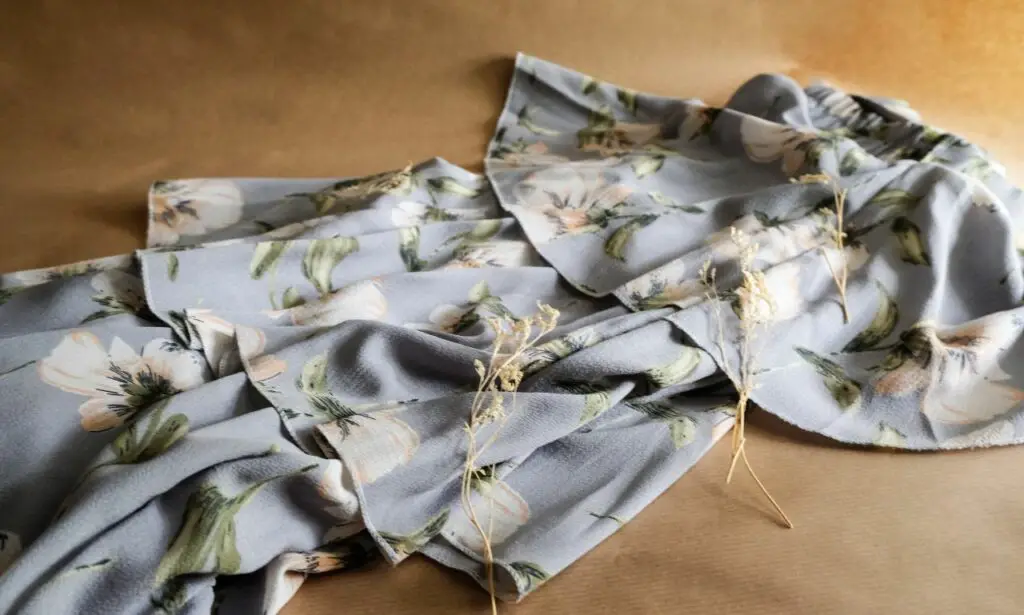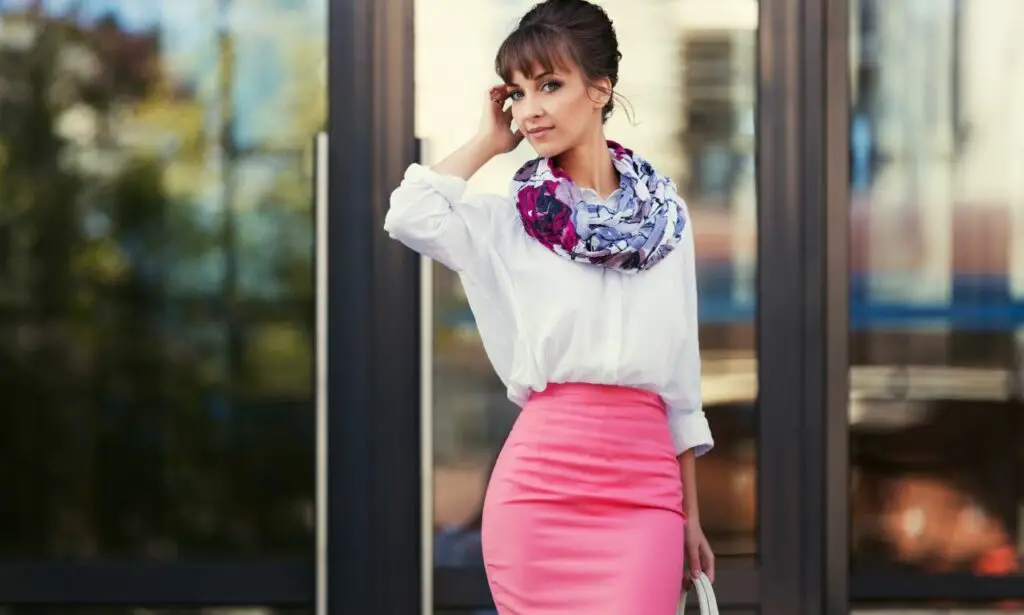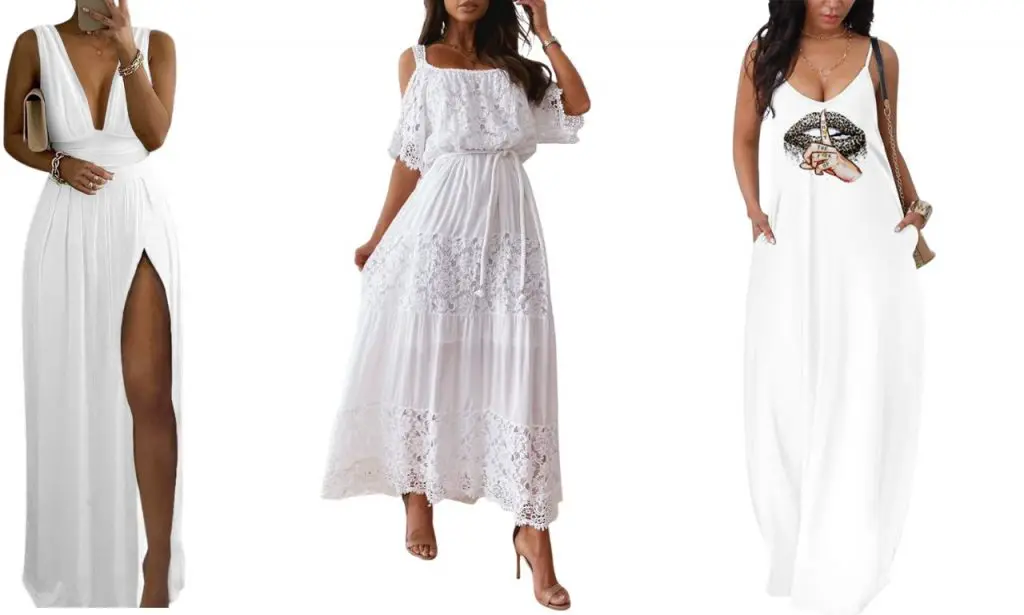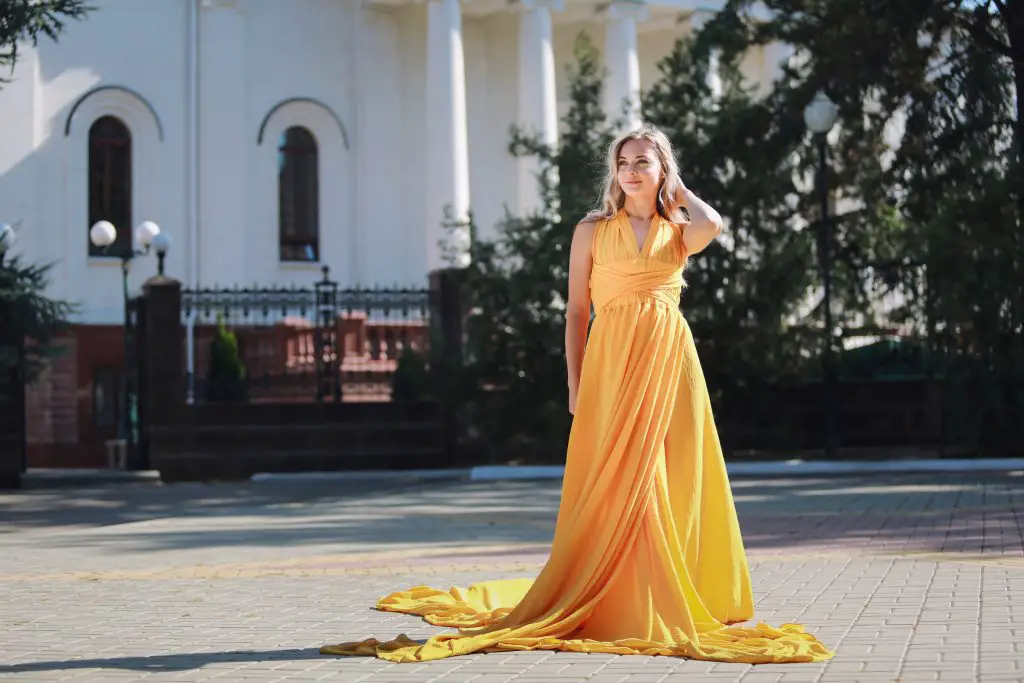With pockets, women could conquer the world
~ Theodora Goss.
Recently, my friend bought a long maxi dress with pockets. Excited, she asked me, “Guess what I love about this dress?” Without waiting, I yelled: Pockets!
At this time, I had my jeans on, whose pockets couldn’t fit even a tiny bottle of my hand sanitizer, forget about my six-inch iPhone 12.
We felt as joyous as finding a $50 note in a long-forgotten jacket.
That’s when it hit me: It’s sad for two grown women to get excited over a dress with pockets.
This scenario prompted me to dig deeper. According to a publication known as The Pudding, pockets on a woman’s jeans are typically 6.5% narrower and 48% shorter than men’s.
But wait, there’s more!
In terms of utility, only 40% of women’s clothing’s front pockets can fit a smartphone of one of the top brands.
Plus, less than 50% of women’s front pockets may fit a wallet specially made to occupy the front pockets.
It gets crazy: Most pockets can’t fit a hand past the knuckles of the people they are designed for.
What if I told you the lack of pockets on women’s clothing didn’t start today. The battle to include pockets on women’s clothes dates back to the 17th century.
Surprisingly, the history behind women’s pockets is political.
The Least Known History Behind Lack of Pockets on Women’s Dresses
The lack of pockets on women’s clothes dates back to the 17th century. At that time, both men and women carried their items in pouches attached to their clothes.
Over time, thieves become wise, forcing people to cover their external pockets with several clothes.
That is how the pockets became a permanent part of men’s clothes. so everything from coats to trousers had built-in pockets
But interestingly, women continued carrying bags attached to their wastes and continued to use separate pockets hidden beneath various clothing layers.
Because of the many layers of clothes, a woman had to undress if she needed to pick something for her pocket. In other words, women could carry their belongings anywhere they went, but they would not access them when in public. This situation marked the beginning of pockets’ inequality.
Despite that, people still hoped that women’s clothing would have pockets one day.
It gets crazy: the French Revolution took the entire phenomenon to a new level.
The French Revolution and Women’s Pockets
When the French Revolution started, everything changed. Slim clothes and tight-fitting skirts came into play. Most women could not continue wearing under their clothes, as the space for pouchy pockets was limited.
According to some, this was a plot to make women powerless. Women couldn’t carry many things, which meant they had less freedom.
And removing pockets meant women didn’t have the freedom to travel freely, go to public areas, and carry written documents. The move barred women from secretly carrying items around.
But when the 20th century reached its peak, women started reclaiming their pockets. Why? Because the Rational Dress Society focused on freedom of movement, urging women to dress for health and comfort. Consequently, the use of uneasy clothes like corsets started waning.
But perhaps the one million dollar question we should be asking is:
When Were Pockets in Clothing Invented?
Pockets have been around for centuries, and they have inspired a great song or two.
Case in point: In 1995, Alanis Morissette sang “Cause I’ve got one hand in my pocket,” and the other one is: giving the peace sign, giving a high five, playing the piano, flicking a cigarette, and hailing a taxi cab as recounted in this song:
Pockets have evolved over the years, and their standardized presence on women’s and men’s clothes is a relatively recent development. As we’ll soon learn, the history of pockets is rife with gender and class politics.
Ready to explore the history of pockets? Let’s roll.
Pockets started showing on trousers and waistcoats around 500 years ago. In the 1600s and after, pockets were a different garment stitched between a slip and skirt. The pockets could be worn and removed with several other garments.
What Women Carried in Their Pockets
Women’s pockets were big enough to accommodate tons of treasures, such as pencil cases, diaries, keys, thimbles, mirrors, combs, scissors, spectacles, bodkins, a pair of gloves, penknives, and (obviously) snacks.
According to Victoria and Albert Museum, London, women of rank in the society carried large amounts of ornate items created from expensive materials.
Examples of the valuables they carried include combs, toothpick cases, snuff boxes, pocketbooks, personal seals, bodkins, smelling bottles, pocket almanacs, silk purses, pencils, and even watches.
Additionally, women of all backgrounds carried money, sometimes in large sums, especially if it was time to collect or pay rent. Besides using purses to store cash in their pockets, women kept their money in a snuff box, handkerchief, or wooden box.
Women also used their pockets to keep jewelry items (like earrings and precious buttons), nutmeg graters, and receipts. Some women used their pockets to keep other people’s items, such as their husband’s wages or watches.
While pockets often seemed to be attached to “country-style” aprons or dresses, they were often placed beneath layers of other garments. This concept was possible because of the era’s forgiving silhouettes and full skirts.
Skirts featured integrated slits for quick access. Working women with cash usually preferred to hide it for security reasons.
In the late 18th century, this all changed as trends started shifting towards tiny waists and slim skirts. Pockets became tinier and more decorative with the Victorian era.
Women wore these small pockets or reticules outside their clothes. The small handbags were meant to be attached or pinned to belts. They symbolized a life of leisure and a husband who took care of the finances.
Women Pockets in the 20th Century
Women didn’t start reclaiming pockets until the 20th century. Suffragettes and their fans began sewing pockets into their garments after purchase, as the male-dominated design and fashion industry wouldn’t do that for them.
The demand for rational clothing increased, and the ‘Suffragette suit’ rose to popularity in 1910. Do you know how many pockets it had? Well, six of them!
In addition to the right to vote, the right to wear practical clothing, particularly pants, was what the Suffragette movement fought for.
This trend continued until the 1920s when women began adopting men’s clothing styles, so they took back the pockets!
Sure, the right to vote was an outstanding achievement too. But come on, nothing beats the pocket!
Men-inspired looks and cuts became popular in the late 20s, particularly with Hollywood celebrities like Marlene Dietrich and Greta Garbo. However, this trend remained a bit controversial. It went unnoticed until 1933 when the trend took center stage after Women’s Wear Daily reported on it in an article dubbed “Will Women Wear Trousers?” The article didn’t go into much detail here.
But in 2010, WWD referred to it as one of fashion’s most significant moments. Despite the controversy surrounding this fashion trend, women wanted menswear and embraced it.
After the unisex fashions became popular, the pockets followed suit, even though purses let them be inclined towards form rather than function. In the mid-1900s, there were shallow but dapper-like pockets that couldn’t hold anything as big as a smartphone.
Fortunately, that wasn’t a concern of the time.
After that, jeans came, and most people embraced this dressing style. But more importantly, people noticed that it was crucial to have real, durable pockets on their clothes.
And now, our worry is remembering to get our smartphones out of our pockets before sitting down.
For men, the suit evolved along with the pockets. Depending on the function, we had various sizes, such as the coin pocket ticket pocket, typically located on the waistcoat.
Most modern-day suites feature these pockets, and men and women can decide which pockets to include on their bespoke suits. The choice of your pocket may ultimately affect the suit’s look.
Women Pockets during World Wars
During the First and Second World Wars, women decided to start doing what deployed men had done previously. This move gave them the freedom and opportunity to earn their cash. Their clothes reflected it, as they began wearing big-pocketed trousers aimed at asserting financial independence and avoiding workplace injuries.
As outfits like the suffragette suit emerged during the first and second world wars, pockets on women’s clothing became fashionable once again.
After the end of the world wars in the 1940s, the feministic desire hit the fashion industry. Soon the manufacture of handbags became popular, displacing pockets. Consequently, women’s clothes, once again, featured a body-hugging style and conventionally feminine silhouettes.
With the introduction of the handbags and figure-hugging clothes, the pockets became smaller and couldn’t appear on the female clothing ultimately.
To date, most women clothing don’t have pockets, which is probably one of the reasons that made Christian Dior in 1954 say:
“Men have pockets to keep things in, women for decoration.”
After these, we had purses. That’s how pockets vanished from women’s clothing. Interestingly, they continued appearing in men’s clothes.
The Push for Pocket Parity
The lobbying for pocket equity started in the late 1800s. In 1891, the Rational Dress Society encouraged women to dress for health and comfort. They rallied for women to ditch constrictive corsets and wear comfortable clothes, such as trousers that, of course, had pockets.
In the 1920s, Coco Chanel – the fashion designer – started sewing pockets into her ladies’ jackets. The move triggered a change in posture since 19th-century women conventionally held hands in front of them and kept them warm using a muff.
But it was until the 1960s and 1970s women could frequently wear pants, particularly the blue jeans that had pockets. But some restaurants could still reject women for wearing such outfits.
This progress stalled, as most women’s clothes lack or feature tiny pockets that can hardly hold a coin. Some think it’s due to the fashion industry’s male dominance and designers that believe in fashion rather than function.
In 2014, Mashable studied five fashion companies about pocket-size during the debut of the large iPhone 6. Company executives said they planned to enlarge pockets on women’s pants but didn’t make any promises, but they haven’t done it years later.
But there’s hope as some fashion stores are replacing the men’s and women’s sections with clothing types, such as shirts, jackets, pants, and dresses. What’s more, some designers are starting to make gender-neutral clothes with sizable pockets – a move that the Rational Dress Society would gladly endorse.
Pockets in Witches’ Dresses
Pockets have this history of being attributed to women, secrecy, intimacy, and privacy. So, if someone suspected a woman is being a little immoral, they could probably associate it with her pockets. A glimpse at the Middle Ages would make the concept clearer.
Back then, women and men had pockets tied close to the waist. By the seventeenth century, male clothing had sewn pockets.
By this time, women were still carrying their bags. Ultimately, the pockets changed into pouches that women could access through their overskirts. A new social assumption cropped up due to their nearness to the pelvic region.
Many historical accounts show that women hid various gifts and secret letters from lovers. But such accounts overlook that women carried other valuable things in their pockets like their own money or husbands’. Generally, it all signals gender inequality.
Here’s the thing: The connection between women’s pockets and witchcraft is one of the recent myths on the internet. This connection isn’t a surprise, given that the history of witchcraft is susceptible to myths.
The truth is that pockets on women’s clothes weren’t phased out due to witchcraft but due to the industrial revolution. The mass production of clothes eliminated the need to sew them from home and add a customized pocket.
So, yes, pockets have a history of privacy, secrecy, and gender inequality.
But women’s pockets aren’t linked to witchcraft. It’s all a recent internet myth.
Why Did People Oppose Pockets?
No one summarizes why people didn’t like pockets on women’s clothing better than Alice Duer Miller – a suffragist. She wrote a weekly column known as “Are Women People?” from 1914 to 1917 for the New York Tribune.
In her tongue-in-cheek piece “Why We Oppose Pockets for Women”, Miller uses satire to reveal the structural illogic expressed in common arguments by the anti-suffrage proponents.
Here are the reasons she gives as to why people opposed pockets:
1. Because pockets aren’t a natural right.
Sure, no one is born with pockets, let alone with clothes for those pockets, and that includes both men and women. So, it’s absurd to think only women don’t have a natural right to have clothes with pockets.
2. Because a majority of women don’t want pockets. And if they did, they’d have them.
Well, so who polled all women worldwide to prove that most of them disliked pockets, anyways? In the same breath, did a majority of men sign up or vote to have pockets included on their clothes?
Of course, not. Whether or not to include pockets on any clothing should be an individual’s choice.
In other words, what Miller is saying is women didn’t have a choice when it came to whether or not to sew pockets on their clothing.
3. Because whenever women have had pockets on their clothes, they didn’t use them
There goes another feeble excuse as to why women shouldn’t have pockets. So, why do they use handbags to carry some of the items that would easily fit into pockets?
Easy: Because they have no pockets to do the same thing.
Women wanted and still want pockets. As earlier discussed, those with pockets had a lot of things to keep inside there, from penknives to money.
4. Because women should carry enough things as they already do, without the extra burden of pockets.
So, pockets are only heavy when sewed on women’s clothing but lightweight on men’s, right?
And what matters most here? Is it the pockets’ weight or functionality?
5. Because it would cause a dispute between a wife and her husband whose pockets need filling.
Hmmm. Simply put, only one gender was supposed to fill their pockets.
This means that not including pockets on women’s clothing was a strategy to prevent them from achieving economic freedom. Only men deserved to fill their pockets with wages.
And even if women worked and earned cash, they weren’t supposed to keep it. Only men had such a privilege.
On the contrary, women didn’t require any pockets because they weren’t supposed to fill them, anyways.
6. Because it would reduce men’s chivalry toward women if he didn’t have to carry her entire belongings in his pockets.
This reason seems to support men’s chivalry. In other terms, it was OK for a man to carry all of a woman’s belongings in his pockets because a woman didn’t have the right to do it on her own.
7. Because women and women and men are men. So, we mustn’t change the order of nature.
Does this statement suppose it’s natural for men to own pockets but unnatural for women? Is there a natural law that says pockets are masculine and not feminine?
8. Men have used pockets to carry pipes, tobacco, chewing gum, whisky flasks, and compromising letters. Therefore, we don’t see a reason to imagine that women would use pockets in a better way.
In other words, it’s alright for men to carry whatever they want in their pockets, but women don’t have a say about their pocket’s contents. What’s more, women didn’t even deserve those pockets in the first place.
Some think that not including pockets on women’s garments was a way to keep them powerless. If you have no pockets to hide secret letters and gifts, then you can’t have secret affairs. Plus, you can’t travel anywhere on your own.
Other than gender inequality, the other reason behind the lack of pockets on ladies’ clothing is the thought that women’s clothes needed to be slim. The pockets added extra fabric, thus removing the intended figure-hugging feminine silhouette.
In a nutshell:
Miller suggested that the motive for not including pockets in women’s clothing was deeply ingrained in the gender inequality of those times.
Pockets at Men’s Clothes
Between the 15th and the mid-16th century, women and men could carry cash and other items in a pouch usually tied near the waist or tied to a belt. The original men’s pockets differed from the sewn-in pockets we see today. Instead, they were separate bags disjointed from the clothing.
In the 17th century, pickpockets became smart, so most people cut slits on their pants, skirts, and shirts. They tucked pouches inside the clothes for safety.
This practice meant that the bags should be flatter and easy to access, so they don’t form a huge bulge.
Here’s the exciting part: The names of various items men placed in these pouches began with ‘pocket’ followed by a hyphen. The idea was to create a phrase that described their minute size and portability.
Examples:
- Pocket-money
- Pocket-knife
- Pocket-pistol
- Pocket-handkerchief
- Pocket-book
- Pocket-brandy (flask)
As men’s clothes became more figure-hugging, fitting a pocket purse between the body and clothing became difficult. The remedy was to attach the pouch to the cloth itself, a move that saw tailors sew pocket bags into breeches and ultimately into coats.
In the 18th century, vests featured sewn pockets, and in the 19th century, most garments for men featured a wide variety of pockets, including:
- Inside/outside breast pocket
- Ticket pocket
- Side/hip pants pocket
- Watch pocket
Here’s an interesting contrast:
Women kept carrying pouches underneath their dresses in the late 1800s. One had to use a placket hole at the skirt’s back to access the pockets. But soon, pickpockets learned how to access the valuables in those pockets. That’s why women decided to be carrying small drawstring reticules in hand.
Some women’s garments had attached pockets, but this didn’t take off compared to the case of men, as the 20th century’s more fitted fashions precluded the possibility. So, women went back to using outside pockets, such as handbags and purses.
On the contrary, men continued using the inner, attached pockets. This trend gave birth to the modern association of pockets-and-men and bags-and-women.
Pockets on Women’s Skirts
Let’s face it. If you ever compliment any woman on her skirt or dress, she’ll quickly tell you this: “Because it has pockets!”
Skirts are better than some dresses, especially in summer, when you need a nice breeze across the body.
Most women are happy to have pockets on their skirts, but the skirt should fit a little higher on the waist instead of the hip, as the weight of objects in the pocket can pull down the skirt. Plus, the fabric should be non-stretch.
Pockets on women’s skirts are as functional as pockets on men’s trousers. You can throw in your phone, keys, a folded tissue, money, lip gloss, and more.
Besides, most women prefer to put their hands in pockets as it’s chic and cool.
But we rarely see pockets on skirts, and if they exist, they are often so tiny that you can’t put anything inside them.
So why do most skirts lack pockets?
The answer is somewhat similar to that of dresses. Simply put, most designers care about women’s appearance rather than functionality.
According to a designer, the purpose of wearing a skirt is to show how pretty a woman’s body is rather than to facilitate their life.
But women need pockets on their skirts for many reasons:
- To toss in a phone, lip gloss, keys, and other items
- So they can place in hands when nervous
- To create room for snacks
- Going out without any purse may be a power move for some women
- Some women think that pocket inequality amounts to gender inequality
- Finding out your skirt has pockets creates the best feeling ever
Why Dresses Barely Have Pockets Nowadays
The desire for pockets on women’s clothing is because the existing pockets are of low quality (fake and shallow) and their non-existence in womenswear. Men seem to have all the pockets on their clothes: the breast pocket, back pocket, interior pocket, and more.
Dear makers of women's clothing, Pants pockets should be like poetry: DEEP ENOUGH TO BE MEANINGFUL.
— Linda Sue Park SAYGAY (@LindaSuePark) June 11, 2019
Women’s clothing is catching up via a more innovative design, but pockets are still elusive. When it comes to womenswear, pockets seem to be synonymous with luxury.
Let’s take weddings for example. Most wedding dresses have pockets. The scenario might leave you wondering, what’s the purpose of a pocket on such a special occasion where the gown itself is already ultra-feminine?
Fundamentally, the need for pockets goes beyond reason and function. Women want them for ease, style, and attitude. To ladies., pockets mean freedom, independence, power, and movement.
Let’s look at why dresses lack pockets these days, but before then, let’s look at some of the popular myths that explain the reasoning behind the lack of pockets in women’s clothing.
Spoiler alert: You’ll notice the laughable excuses for excluding pockets from women’s clothing are way more than the actual reasons for not including the pockets.
Ridiculous Myths as To Why Women’s Clothes Don’t Have Pockets (or Have Fake Pockets)
1. Handbags are better pocket replacements
If our clothes don’t have pockets, we’ll need a place to keep our stuff, right? That’s where the handbags come into play.
Some people believe that the smaller pockets on women’s clothing are because brands want to encourage women to buy handbags. So, to ensure women choose handbags as an accessory and necessity, they include useless pockets to the clothes.
But I don’t want to spend 13 minutes digging around my handbag searching for an earring or some coins when I need these valuables quickly. I want to keep my small items in a specific place on my clothing to access them quickly as often as I wish.
2. Pockets are on jeans, so if your dress or skirt lacks them, grab a pair of jeans with pockets.
But what if I prefer a three-quarter length wide pant with a zip at the back? There’s no need to force me into wearing skinny jeans just because of my pockets. I should be able to wear a dress, skirt, shorts, or trousers of my choice with pockets.
3. If women’s garments had pockets, men’s fashion would be inferior
Take a moment to think about it. Men’s pants have pockets already, so adding pockets on women’s clothing won’t change a thing.
4. The extra space will cause women to keep more money and increase their demands for equal pay.
Well, is pockets the only place to stash tons of cash? Your guess is as good as mine.
5. Pockets will give women easy access to pepper spray, making it difficult to stalk them. In other words, the use of pockets will cause men to fear asking a lady out alone at night.
That means they’d never date, never marry, and never get kids. The population would decline, and the human race would probably face extinction. And the reason being a few women wanted their pants and blazers to have pockets.
6. To protect women from pickpockets
Won’t pickpockets go for the woman’s purse or handbag? And don’t these thieves target men, as well?
The Real Reasons Behind the Fake or Non-Existent Pockets on Women’s Pants and Dresses
As you may have observed, pockets on women’s clothing are controversial. So, is the story different on ladies’ pants? Well, it isn’t any different; pockets on women’s jeans are much smaller compared to men’s.
Men’s pants pockets can fit keys, cell phones, and wallets, but women’s pockets are too small to hold even a coin.
Why? Various reasons have been put forth to explain this disparity.
1. Not adding pockets makes the female pants slimmer and more feminine. Putting things in the pocket makes it bulky by adding a lumpy bulge on the upper thigh. That’s why most pants come with smaller pockets.
2. It’s a cost-saving strategy. Real pockets are costly. Clothing companies eliminate pockets by cutting on fabric material to make more profits. Less fabric and less sewing mean reduced manufacturing costs.
3. The other reason is the ever-changing fashion trends. Modern women’s pants are supposed to be body-fitting, so adding more oversized pockets may introduce unnecessary layers that ruin the appearance.
4. The area might stretch if the designers tuck the pocket into the pants. And the fabric may stretch out if actual pockets are used, leading to wrinkly pockets. As a result, fashion designers keep the pocket size small.
Final Thoughts
The debate on why women’s clothes don’t have pockets has been around for centuries. Most women seem to prefer skirts, dresses, coats, and pants with pockets, but not all fashion companies are keen to include this feature in women’s clothing.
However, some companies are beginning to respond to the moment’s need by adding gorgeous pockets to dresses. The pockets are deep enough to keep your hands warm and hold your phone, keys, lip gloss, and the rocks your toddler picks and gives you when going to the park.
Hopefully, more fashion designers will overlook all the myths surrounding pockets and start making more womenswear with pockets.

